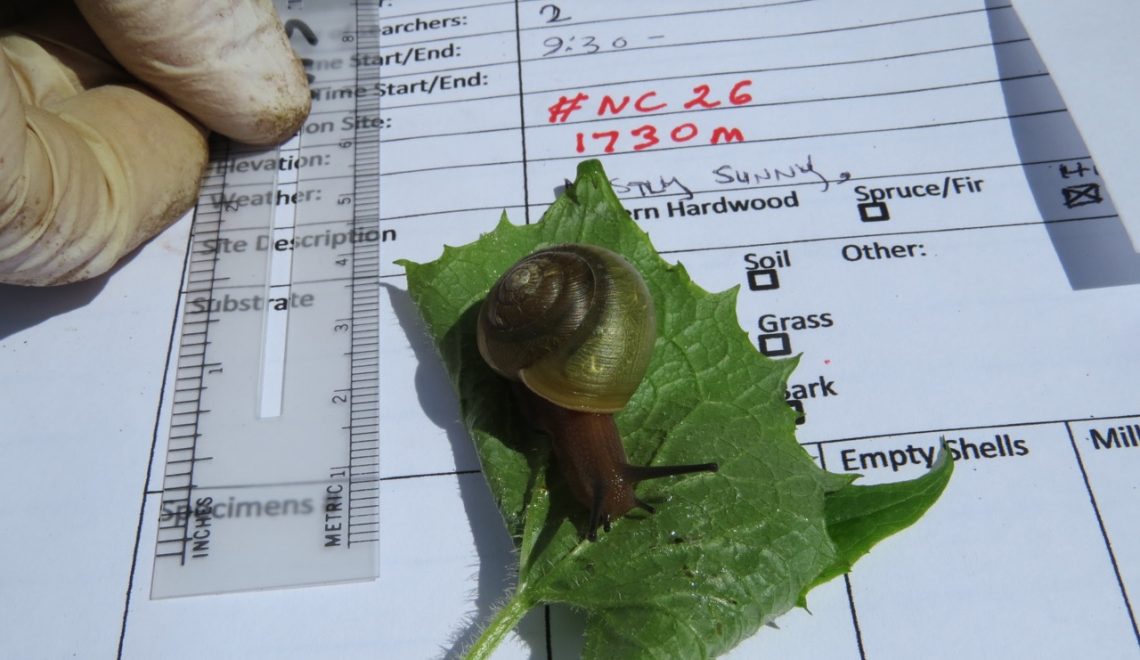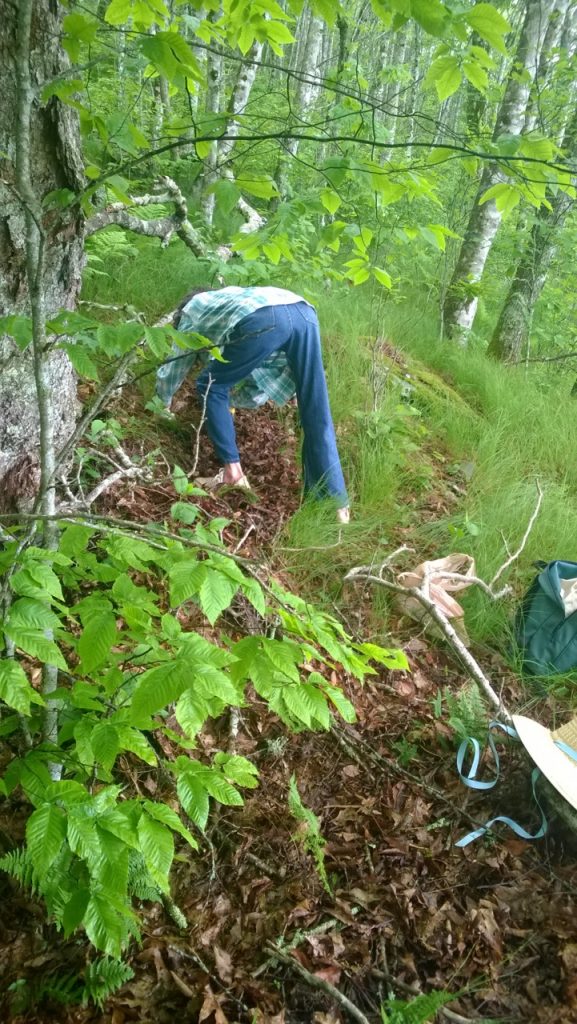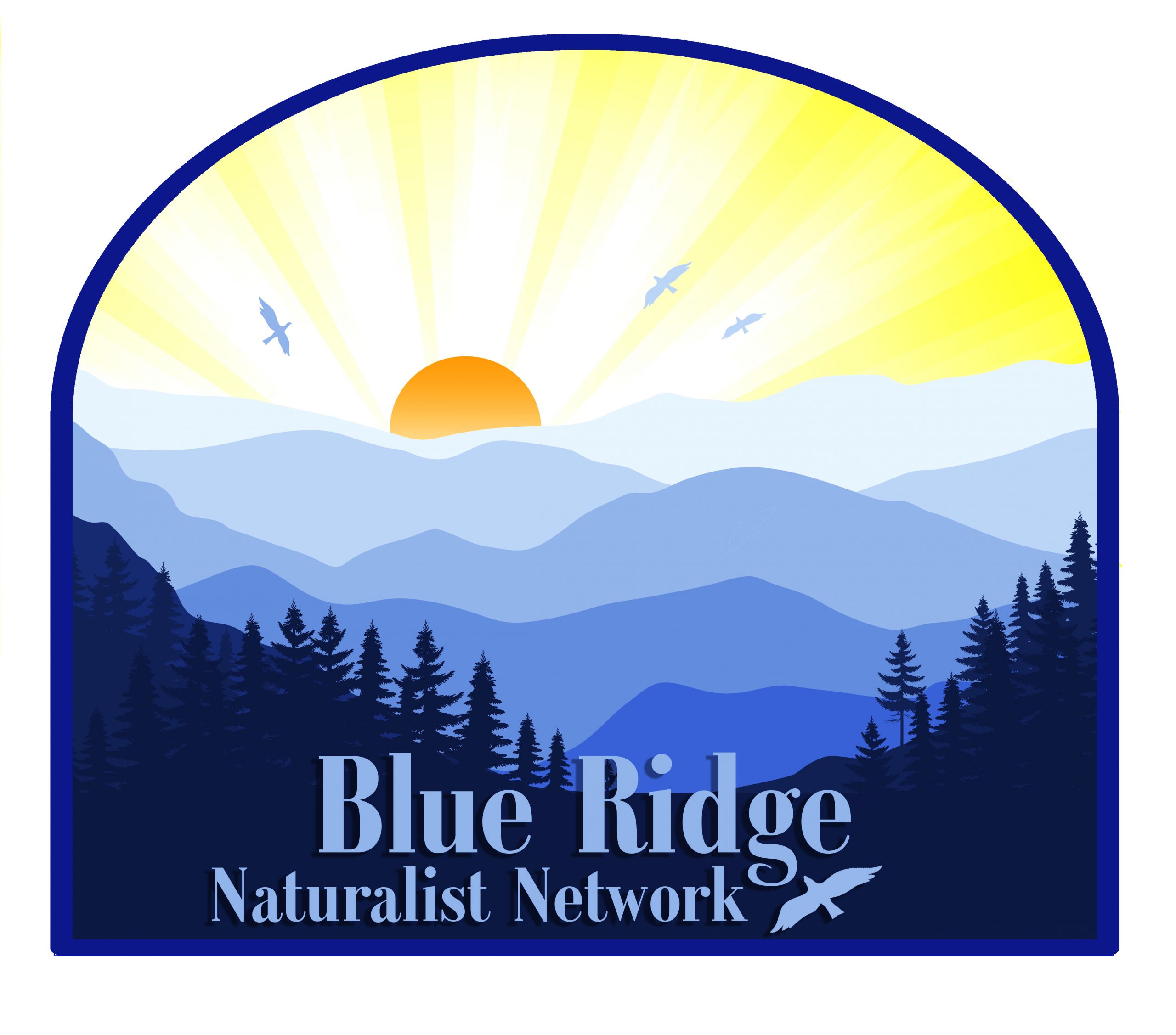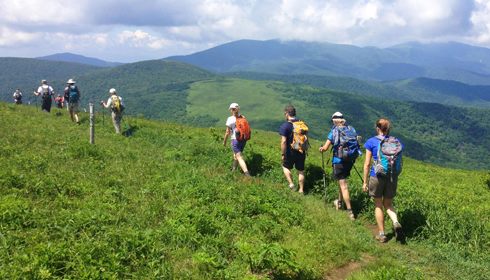BRNN moves into Citizen Science – at a snail’s pace

If you saw some small disturbed areas of ground near Craggy Gardens recently, you might think a bear, or some wild turkeys had been turning over the leaf litter. You’d be wrong. It’s evidence that a small group of BRNN members have been taking part in a citizen science project – The Blue Ridge Parkway Snail Transect.
Initiated by the National Park Service, with outreach coordinated by Hands on the Land, the project will provide baseline data on the distribution of land snail species along the length of the Blue Ridge Parkway. Snails, which prefer cool, moist, unpolluted habitats, are important indicators of environmental health, biodiversity, and climate change. They also play a vital role in recycling forest nutrients, especially calcium. Land snail populations have dwindled in recent decades, contributing to the decline of some birds species that depend on them as sources of calcium for egg shells. The Blue Ridge Parkway, running 469 miles through relatively unpolluted Appalachian forest, provides an ideal transect for a base-line study of snail frequency and diversity, but requires far more people to survey and collect specimens than the Park Service can muster. Hence the call for citizen scientists.
When we heard about it, this seemed an ideal project for BRNN. Charlotte Caplan contacted Paul Super, Science Coordinator for the Great Smoky Mountains National Park, and we were in! Eight of us attended an all-day training in April at the BRP Visitor Center east of Asheville, where we were taught more than we could possibly remember about snails, how to collect them, and which ones to keep separate because of their carnivorous habits. We learned we were also to collect slugs (just snails without shells) and millipedes, which are completely unrelated to snails but occupy similar habitats and are also good indicator species. In for a penny, in for a pound.
We selected from the list of survey sites a cluster of five in the heath bald above Craggy Gardens picnic area, and Paul later gave us a sixth one on the Parkway below.
On June 4th we carpooled from the Visitor Center to Craggy Gardens and hiked the mile to our cluster of five sites, which Ken Czarnomski and Charlotte had, with great forethought, located and tagged with yellow tape back in May. By 10:00 AM we were all on our hands and knees looking for snails. Your garden may seem overrun with snails and slugs but, take it from us, when you want them they are hard to find. Some of us, i.e. Randy and Susan Richardson, are better at it than others. But after a couple of hours we had logged 41 specimens.
After a picnic lunch it started raining, so we left the last site for another day and delivered our specimens to the Visitor Center. Three of us went back on June 6 and found the last site to be inaccessibly steep, so we tried a less intimidating spot just the other side of the Parkway. We found only 3 snails and one empty shell, but you can’t be in the woods for two hours and not find other delights – two tiny salamanders, rock tripe lichen (Umbilicaria mammulata) on the boulders, and a verge covered in young stems of Green Coneflower (Rudbeckia lacianata) which had just been cut down by the mowing team. Charlotte gleefully gathered an armful to take home for dinner, for this is Sochan, a wild green prized by the Cherokee for its taste and nutrition.
Charlotte Caplan






48 comments